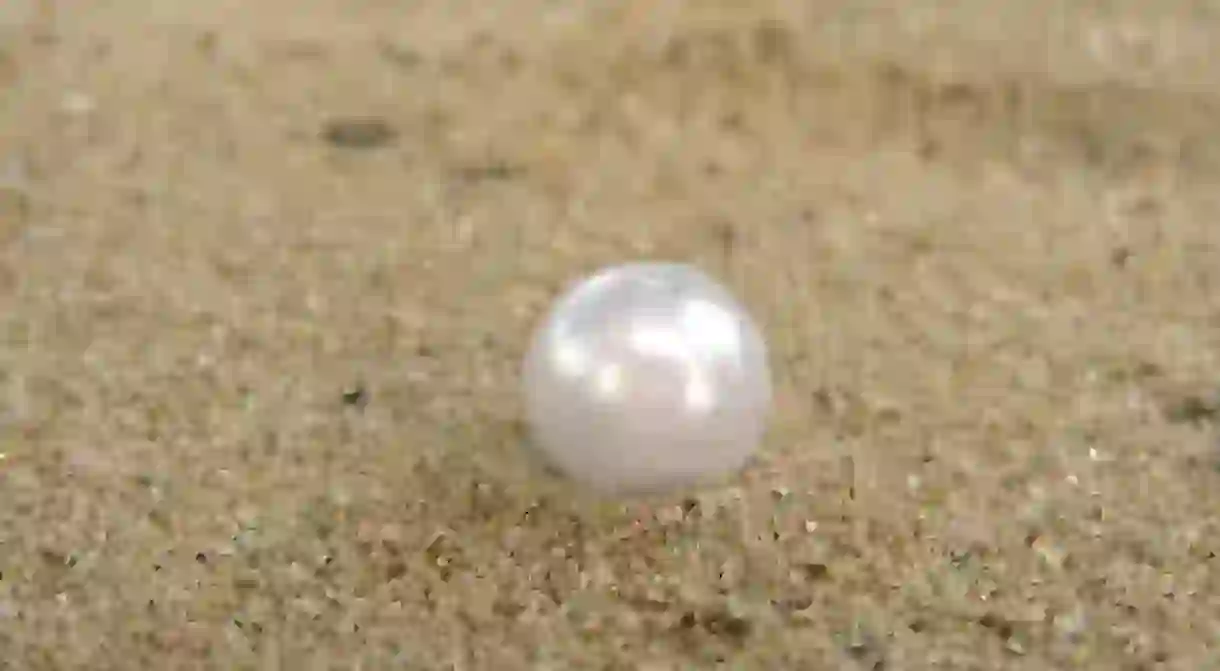8 Things You Should Know About Pearl Diving and its History in the UAE

While today the UAE is famous for the city of Dubai and the country’s oil boom and riches, not many people know about its ancient history of pearl diving. From its history to its international influence, here are the eight things to know about the UAE’s pearl diving past.
Pearl diving may have been happening more than 7,000 years ago
The history of pearl diving in the UAE is ancient, with archaeologists finding evidence of this tradition dating back more than 7,000 years ago. In addition, archaeologists have discovered that pearl trading reached wide-spread popularity during Roman times and that in the 1100’s, the city of Ras Al Khaimah was a booming trade post because of the pearl industry.
The UAE’s pearls were traded far and wide
UAE pearls have been documented to have traveled all the way to Rome, Venice, India, Sri Lanka, and some have even pointed to evidence of pearls from the UAE showing up in Viking possessions in Scandinavia. The pearls of the UAE were one of the most sought-after accessories of the time.
Pearl diving provided a relatively good income
Well before the money from the oil boom, the UAE was thriving off of the money made from the pearls. Pearl diving offered seasonal if not full-time work for many local Emiratis, and many UAE families can still trace their fortunes back to the historic pearl diving their forefathers did.
Pearl diving was the basis for the founding of cities like Dubai and Abu Dhabi
Because of the booming pearl industry, many families and pearl divers ended up moving to coastal towns like Dubai and Abu Dhabi to be closer to work, and therefore helped establish the history and foundation of the UAE’s two biggest cities.
A rich tradition and social system developed from pearl diving
Pearl diving became, and is still considered, one of the UAE’s most treasured traditions. Well into the 20th century the traditional way of diving was preserved; such as keeping the communal atmosphere of the diving boat alive, using clips of turtle shell to plug the nose while diving, plugging the ears with wax, and the eating of dates and coffee before a dive. Each member of the boat had a specific task, and this helped keep a loose social system that transferred back onto land as well. Outsiders however, were forbidden to dive for pearls without the approval of local rulers.

Diving for pearls was no easy job
Diving under water using only traditional tools was no easy task, and only the strongest and most enduring could handle this task. Divers were expected to tie a small stone to the bottom of their foot in order to sink to the bottom of the seabed, and collect as many oysters as they could before their breath ran out. In many unfortunate cases divers drowned or were even attacked by sharks.
Many international brands used UAE pearls in the beginning for prestige
While pearls are no longer an exclusive commodity only from the UAE, some of today’s most top-ranking brands began their careers by using UAE pearls for prestige and quality insurance. Cartier is one of the most famous examples of a loyal customer of the pearls of the Arabian coastline, with Jacques Cartier making his first journey to the region in 1912 to hunt for the mother of all jewels, which is what the pearl is so often referred to as.

Unfortunately UAE pearls were replaced by artificial Japanese pearls by the 1900’s
By the early 1900’s the Japanese had discovered a way to make artificial and flawless pearls, which unfortunately caused the pearl industry in the UAE to plummet. That and the discovery of oil in the Arabian Peninsula caused many local Emiratis to shift positions from the pearl industry to the oil sector. While pearl diving today remains a reflection of what many consider the historical golden age of the UAE, the traditions that sprang from the abundance of pearls remain ingrained in the local culture to this day.













